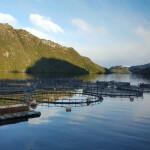Once again, Vietnam has failed to deliver on its seafood export value goal, as sales of key commodities including shrimp and pangasius, were lower than previously expected in 2019.
According to the Vietnam Association of Seafood Exporters and Producers (VASEP), the country exported seafood worth USD 8.6 billion (EUR 7.7 billion) in 2019, down 2.2 percent year-on-year, and much lower than previous goal of USD 10.5 billion (EUR 9.4 billion).
This is the second time in a row that the country has been unable to achieve its goal. In 2018, the export value was USD 8.79 billion (EUR 7.87 billion), also well below the target of USD 10 billion (EUR 8.96 billion).
Sales of shrimp, the biggest contributor to Vietnam’s seafood export value, were USD 3.38 billion (EUR 3 billion) in 2019, down nearly 5 percent year-on-year, with the export value of whiteleg shrimp falling 3.2 percent to USD 2.36 billion (EUR 2.11 billion) and the value of giant tiger shrimp declining 15 percent to USD 693 million (EUR 620.7 million).
Shrimp exports slowed in the first half of 2019 as stockpiles in major markets were high while supplies from top producers increased. However, exports recovered in the second half of last year, VASEP said, with shrimp export value to China increasing by double digits, percentage-wise, and shipments to the United States also increasing. But sales to most of other major markets, including the European Union, Japan, South Korea, and the ASEAN bloc, declined.
Fimex (Sao Ta) Chairman Ho Quoc Luc told SeafoodSource on 4 January that disease issues led to shortage of shrimp of bigger sizes in Vietnam, causing prices to fall 5 to 7 percent.
“As domestic supply of shrimp of bigger sizes was limited amid rising prices, especially during the second half, exporters incurred losses for export contracts signed previously,” Luc said.
The country’s leading shrimp exporter, Minh Phu, said a material shortage affected its export activities in 2019, forcing it to sign less export contracts in the third and fourth quarters of last year. Minh Phu earned an export value of USD 603.3 million (EUR 540.4 million) in the first 11 months of 2019, down 11.2 percent, with sales declining in most major markets, except the E.U.
Vietnam’s pangasius exports also faced a difficult year in 2019, as sales declined 11.7 percent to nearly USD 2 billion, amid high production and low prices.
Vietnam produced an estimated 1.52 million metric tons (MT) of pangasius in 2019, up 6.9 percent from 2018, according to data from the General Statistics Office (GSO) released 27 December. Output still increased on a year-on-year basis, despite a slump in prices in the latter part of the year, because farming areas were extensively expanded throughout 2018 and the first quarter of 2019, when prices soared.
Pangasius exports to the U.S. in 2019 were worth USD 282 million (EUR 252.6 million), a decline of 49 percent year-on-year, which was attributed to high stockpiles and lower demand. Export prices to this market fell between 30 percent and 35 percent compared to 2018. In 2019, the export value to the U.S. accounted for 14 percent of Vietnam’s total pangasius export value, while China accounted for 32 percent of Vietnam’s gross export value for pangasius.
Luc, the former chairman of VASEP, agreed the domestic oversupply in Vietnam and high stockpiles in the U.S. made it difficult for exporters of pangasius to fulfill their goals in 2019. But he said the sharp decline of salmon prices last year also put more pressure on sales of pangasius in major markets. Luc added that Vietnam’s pangasius sector will see more competition from China, India, and other countries that have boosted their pangasius farming, while production of pollock Alaska, a competitor of pangasius, remains high.
Sales of wild-caught seafood, meanwhile, surged 8 percent to USD 3.2 billion (EUR 2.9 billion) last year, with sales of tuna rising 12 percent to USD 728 million (EUR 652 million) and the export value of other sea fish species increasing 15 percent to USD 1.65 billion (EUR 1.48 billion).
But while the export value from wild-caught seafood to other major markets rose last year, sales to the E.U. fell 11.5 percent, dropping the bloc to the fifth spot on Vietnam’s largest buyers of wild-caught seafood, down from the second position previously. The lower sales to E.U. were due to the impact of the yellow card imposed by the E.U. since October 2017, according to VASEP.
In 2020, Vietnam has once again set the goal of earning USD 10 billion (EUR 8.96 billion) from its seafood exports, up 16.3 percent from 2019, General Department of Fisheries Director Tran Dinh Luan told the Vietnam News Agency.
VASEP also expects total seafood export value this year to rise at a lower rate of between USD 9.3 billion and 9.5 billion (EUR 8.3 billion-8.5 billion), should domestic production and global markets go smoothly.
Photo courtesy of Maurice Lesca







